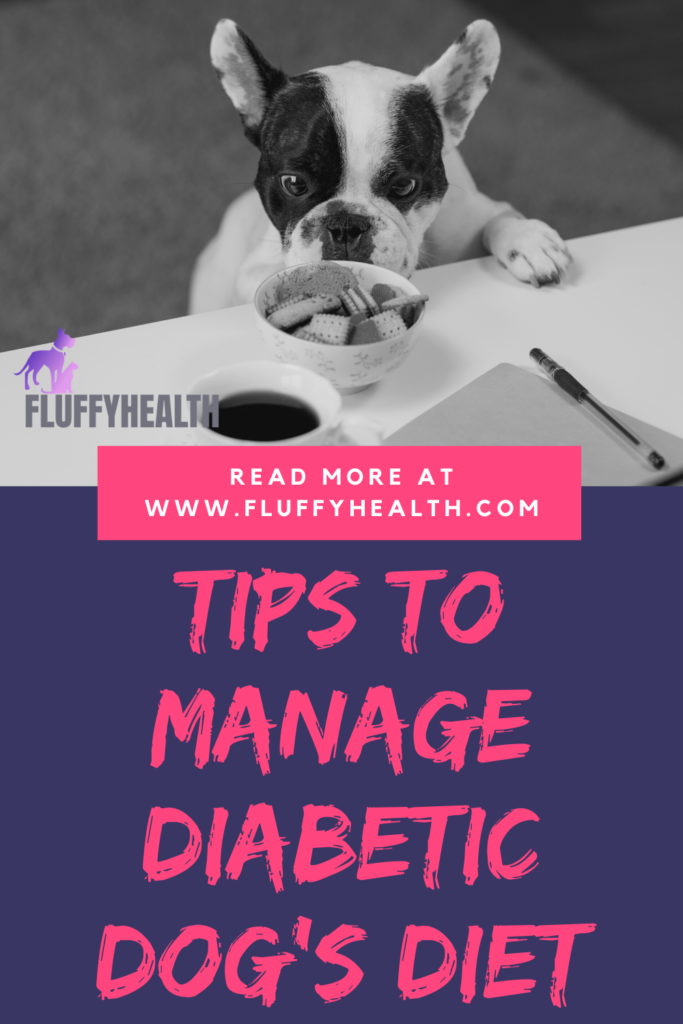A canine diabetes diet is an important topic to ensure diabetic dogs stay healthy and receive all the needed nutrients. Don’t worry! With good care, your dog can manage a long, healthy life.
Although many people rush into insulin injection to manage their diabetic dogs’ condition, we believe finding an ideal canine diabetes diet might also be an effective and sometimes more promising to lower the effects of diabetes on a dog’s body.
However, carelessly serving a random diet your friend used to serve their diabetic dog isn’t a smart thing to do because things like pet’s sex, age, size, medical history, diabetic stage, and even responsivity to certain types of foods are all crucial decision-making aspects.
Like us, when dogs are diabetics, staying fit, and eating a healthy diet is critical. Losing weight in overweight dogs is essential because it can help his body cells better use insulin. That makes it easier for your dog’s body to turn glucose into energy.
Any plan for diabetic dogs aims to keep their blood sugar (or glucose) levels within the normal range. This helps your dog stay healthy and makes it less likely your dog get severe complications, such as cataracts (vision-clouding) and UTI (urinary tract infections).

Table of Contents
What Nutrients Does My Diabetic Dog Needs The Most?
Instead of stating a list full of nutrients, we will take another approach to help you consolidate a better understanding of why each nutrient has been chosen, and what value it delivers to your diabetic dog.
We need to identify each change associated with diabetes in dogs and what nutrient is the most suitable to retrieve normal body function.
? Excessive Thirst
When your dog overconsumes sugary foods, it’s kidneys will have to put twice the effort in glucose absorption, when it fails to do so, your dog will dehydrate and feel thirsty.
Suitable Solution: Water.
? Elevation In Glucose Levels
Insulin serves as a messenger inside the body that tells the cells when and how to convert glucose to energy. In diabetic dogs, insulin can’t deliver its message to cells. Thus, glucose will accumulate in cells.
Suitable Solution: Fiber.
- Why Fibers?
Anti-diabetic activity found in soluble fiber is mainly represented by the ability to slow down carbohydrates absorption by cells leading to a more stable glucose level.
- Is It For All Dogs?
No, high-fiber diets won’t be recommended for all dogs, the reason for that is that fiber consumption will make your dog feel full, which isn’t a good thing if your puppy was underweight fiber consumption should be proportionate to your dog’s size.
Each gram of fiber usually adds up to 4 calories in your dog’s diet, so when taking to account your dog’s size, activity, and recommended calorie intake, you should be able to estimate what amount of fiber is good and what is too high.
However, one thing to mention is that the canine diabetes diet differs from another in their fiber calorie ratio. Some foods like strawberries, avocado, and apples are considered high-fiber foods and high-calorie foods with more than 8 calories per one gram of fiber. If your diabetic dog is underweight, we advise you to restrict such foods from your dog’s daily diet to prevent further weight loss.




? Weight Loss
When your dog has diabetes, his cells won’t know how to produce energy from glucose (not without insulin anyway). That’s why they feed on fats and proteins as another resort for energy, making your diabetic dog skinner every day.
Suitable Solution: Calories.
- Why Can’t We Give You The Ideal Calorie Intake For Your Dog?
For medium-size, low-activity canines, the recommended calorie intake generally ranges from 25 to 30 calories a day, so, for diabetic dogs, this should be slightly up (depending on the type of diabetes and its stage).
However, other factors like age and species are vital when determining the ideal calorie intake; for example, certain breeds of dogs like Border Collie need more calories than other dog species.
So, putting that in mind, the best way to figure out the right calorie intake for your dog is by asking your veterinarian.
? Kidney Damage (Long Term Effect)
When poorly controlled and with consistently elevated levels of blood sugar, arteries, and veins in the kidney might be exposed to damage. Such damage in the blood vessels might prevent the kidney from getting enough blood to function as it is supposed to be called kidney damage.
Suitable Solution: Vitamins.
- Why Vitamins?
Minerals and vitamins (especially vitamin B complex) can strengthen the walls of blood vessels, making them less venerable to damage. We recommend using food rich with folate and vitamin B6, mainly to prevent further damage to the kidney.
? High Blood Pressure (Long Term Effect)
By damaging arteries’ walls, diabetes makes them more venerable to hardening or what’s known as atherosclerosis. Atherosclerosis is known to be one of the major leading causes of hypertension.
Suitable Solution: Antioxidants.
- What Do Antioxidants Do?
The antihypertensive activity in antioxidants is mainly represented by its ability to reduce aldehyde conjugate formation and improve insulin resistance by cells. That’s why we always find foods rich with vitamin C, vitamin A, calcium, potassium, and magnesium to be the ideal canine diabetes diet.


It Is All About Timing!
It is not about giving your dog insulin and a healthy diet. It is about balancing insulin and diet intake, which will improve the outcome. The dog’s body continually processes food and insulin between meals and injections.
It would be best if you talked to your veterinarian about arranging your dog on the insulin injections’ right schedule (Normally, Insulin injections should be given twice a day – every 12 hours.). But, most dogs do best on a daily schedule of 2-3 meals.
Walk Your Dog!
Losing weight and lower blood sugar levels is vital to help your diabetic dog, and that can be done by regular exercise and walking your dog. It’s also most beneficial to have your dog walking daily for the same time and at the same intensity. An oddly long or intense workout could cause your dog’s blood sugar levels to drop too low, which might cause health problems.
You must also understand that this process can take up to months to get better control of your dog’s blood sugar. So don’t worry if your dog’s blood sugar levels aren’t under control during this period.
Moreover, losing weight (especially for fat dogs) is essential and may reduce your dog’s need for insulin. Therefore, it would be great if you check the insulin levels often.
It is difficult to care for a dog with diabetes at first. But shortly, the new changes will become part of your daily life as a routine. Also, the special care and attentiveness you’ll give your dog will strengthen your friendship and bond.


Canine Diabetes Diet & Foods That Fits The Above Criteria
- Carrots (An ideal way to supplement fiber into your dog’s diet).
- Rice (Excellent option to promote weight gain).
- Blueberries (They are rich in vitamins and minerals which give them significant antioxidant characteristics).
- Nuts (Ideal powerhouse for vitamins).
- Watermelon (With 92% water and watermelon are one of the best hydrating foods your diabetic dog could eat).
Based on your dog’s weight and the daily activity level, your veterinarian will decide how many calories your dog needs every day. Once you identify that number, it’s essential to maintain a close eye on what your dog eats and how much.
Experts are yet investigating what diet is the best for diabetic dogs. Most veterinarians prescribe a high-fiber, low-fat diet. Canine diabetes diet can vary, but fibers slow the passage of glucose into the bloodstream and help your dog feel satisfied and full. And Low-fat diets have fewer calories. Synchronically, a diet that contains high-fibers and low-fat can help your dog eat lighter and lose weight.
But you must make sure your dog drinks enough water because a high-fiber diet will take water from the dog’s body, which can cause constipation and other digestive related problems.
Nevertheless, most dogs do fine with the standard food you can buy at any store. Still, your veterinarian may suggest dog food formula or a homemade-based diet developed by a specialized veterinary nutritionist.
Without a doubt, If your dog doesn’t like the new “food” and isn’t eating as much (It could also mean he has another health issue or has diabetes-related complications). It would be best if you talked with your vet to find the best alternative.


Balanced Canine Diabetes Diet For A Better Life
Although diabetes can’t be treated, the way you handle it might mainly reflect your dog’s health. Whatever canine diabetes diet, you think it’s the best fit for your dog, it won’t lead to the expected results if not been served consistently and the right way.
Always make sure to contact your vet to manage the best schedule and diet for your dog to get the best outcome for a healthy and happy life.
If you have more information about canine diabetes diet, please write them down below in the comment section. So, every dog owner benefits from that.
You’ll Also Love These Posts:
Studies have shown if you like this blog article — you will also love the following posts.


